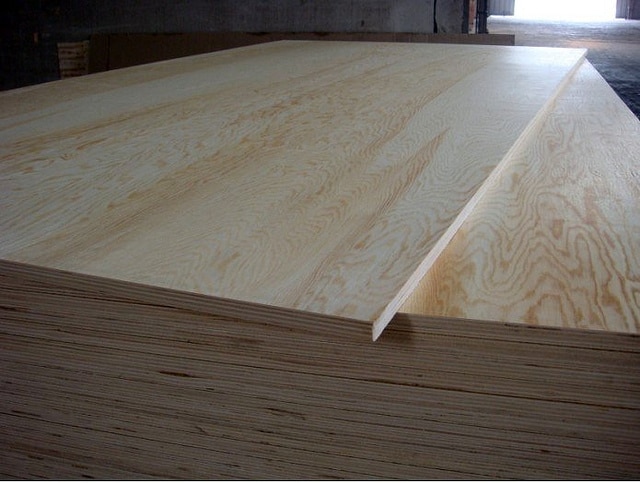[av_section min_height=” min_height_px=’500px’ padding=’default’ shadow=’no-shadow’ bottom_border=’no-border-styling’ scroll_down=” id=” color=’main_color’ custom_bg=” src=” attach=’scroll’ position=’top left’ repeat=’no-repeat’ video=” video_ratio=’16:9′ video_mobile_disabled=” overlay_enable=” overlay_opacity=’0.5′ overlay_color=” overlay_pattern=” overlay_custom_pattern=”]
[av_heading heading=’Lumber Buying Guide: A Comprehensive Overview of Hardwoods and Plywood’ tag=’h2′ style=” size=” subheading_active=” subheading_size=’15’ padding=’10’ color=” custom_font=” custom_class=”][/av_heading]
[av_textblock size=” font_color=” color=” custom_class=”]
Choosing the proper lumber that is best suited for your particular project can seem to be a complicated process. There are many different options and a great deal to consider. Your lumber yard has the professionals to help guide you, but understanding the basics can be very helpful. Our Lumber Buying Guide Overview provides the general information about lumber and how it is graded. We also offer a Softwoods Lumber Buying Guide that covers the intricacies of softwood lumber. In this article, we will look at hardwoods and plywood to help understand how they are graded and their typical applications.
[/av_textblock]
[av_two_third first min_height=” vertical_alignment=” space=” custom_margin=” margin=’0px’ padding=’0px’ border=” border_color=” radius=’0px’ background_color=” src=” background_position=’top left’ background_repeat=’no-repeat’ animation=” mobile_display=”]
[av_heading heading=’About Hardwoods’ tag=’h2′ style=” size=” subheading_active=” subheading_size=’15’ padding=’10’ color=” custom_font=” custom_class=”][/av_heading]
[av_textblock size=” font_color=” color=” custom_class=”]
In general, hardwoods have a much simpler grading and classification than softwoods. Hardwood is cut into increments of one-quarter inch and does not have standard widths as softwoods have. Appearance is the number one factor considered when grading it. A standard grading system was developed by the National Hardwoods Lumber Association.
[/av_textblock]
[/av_two_third][av_one_third min_height=” vertical_alignment=” space=” custom_margin=” margin=’0px’ padding=’0px’ border=” border_color=” radius=’0px’ background_color=” src=” background_position=’top left’ background_repeat=’no-repeat’ animation=” mobile_display=”]
[av_image src=’https://lumber-one.com/wp-content/uploads/2016/06/6756317991_ac32097d3b_z-300×226.jpg’ attachment=’1398′ attachment_size=’medium’ align=’center’ styling=” hover=” link=” target=” caption=” font_size=” appearance=” overlay_opacity=’0.4′ overlay_color=’#000000′ overlay_text_color=’#ffffff’ animation=’no-animation’ custom_class=”][/av_image]
[/av_one_third][av_heading heading=’Classification and Grading’ tag=’h2′ style=” size=” subheading_active=” subheading_size=’15’ padding=’10’ color=” custom_font=” custom_class=”][/av_heading]
[av_textblock size=” font_color=” color=” custom_class=”]
Hardwood lumber is classified by its visual appearance. The greater the amount of defect-free surface on its worst looking side that a piece of lumber has determined which grade applies. Often, the worst defects can be cut from the lumber to increase its grade. Only four grades are used in the classification of hardwoods.
The first grade is FAS or first and second. Hardwoods that are of the highest quality will fall into this category. FAS wood must be a minimum of 8 to 16 feet long, be at least 83.3% defect-free on its worst side, and must be at least 6 inches wide. The next classification is Select – No. 1 Common. Lumber in this grade must be a minimum of 3 inches wide, 4 feet long, and 66.6% defect-free. Select – No. 2 Common is next. It has the same size requirements and must be 50% defect-free. The last category of graded hardwood lumber must again meet the dimension requirements, and must be at least 33.3% defect-free.
It should be noted that a lower grade piece of lumber can still be used to create amazing fine woodworking projects. Defects can be artfully integrated into the project. However, depending on your particular application, you will need to consider how high is the grade of lumber you require.
[/av_textblock]
[av_heading heading=’About Plywood and Paneling’ tag=’h2′ style=” size=” subheading_active=” subheading_size=’15’ padding=’10’ color=” custom_font=” custom_class=”][/av_heading]
[av_textblock size=” font_color=” color=” custom_class=”]
Plywood consists of wood layers called veneers or plies. Plywood layers are glued together and alternated 90 degrees from the layer below. Plywood layers are the reason it has such great strength. You may notice when using plywood that one side will be smooth and more visually appealing than the other. This is called the face. The other side that may be rough and less visually appealing is referred to as the back. This is done because plywood is typically used with only one side showing. Usually, plywood consists of hardwood or softwood, or also a combination of both. The majority of plywood used for general application will be made of softwood. For more specific applications such as fine woodworking or building furniture, hardwood plywood is typically used.
Plywood is an extremely versatile type of lumber and also has differing grades to consider. In construction, plywood is commonly used for applications including siding, roofing, and flooring. It is also an excellent product to use for countless other applications. Plywood has many great features that make it so useful. First, it is relatively light. Moreover, despite being lighter, it remains very strong and rigid. Furthermore, if plywood does crack, it will not crack clear through.
[/av_textblock]
[av_heading heading=’Plywood Grades’ tag=’h2′ style=” size=” subheading_active=” subheading_size=’15’ padding=’10’ color=” custom_font=” custom_class=”][/av_heading]
[av_textblock size=” font_color=” color=” custom_class=”]
Plywood may use one of several different grading methods. Most use a system of grading by letter, from A to D. A lumber will be a higher quality than D lumber. The higher the grade, the more costly the lumber will be. You must consider what the plywood will be used for to best choose the grade needed. Grade A lumber will be smooth on the surface with minimal repair to knots and defects in the veneer. Grade B will have a solid surface, but also may have minor veneer defects or splitting. Grade C may have discoloration, defects from sanding, and knotholes that do not impact its overall strength. Grade D may have all the above and larger knots and knotholes. Plywood will often have two grades, one for the face, and one for the back.
Another classification often used includes the classifications Exterior, Interior, Exposure 1, and Exposure 2. Depending on what you are using the plywood for, these classifications are important. Exterior plywood uses a waterproof glue, called bond, holding the plies together. Exposure 1 uses a bond that is waterproof. However, the wood is not treated for constant exposure. Exposure 2 uses a non-waterproof bond and is generally recommended for applications that may have slight moisture exposure. Finally, Interior plywood is not meant to withstand moisture and is typically used only for interior applications.
The last classification used when grading plywood refers to the application it is recommended for. The majority of plywood used for general home use will be rated as Sheathing. The other classifications used in this method are Stud I-Floor and Siding. Like other types of lumber, the grading and classification information will be stamped on the lumber making it easy to determine the grade and proper application.
Now that you understand the basics of softwood lumber, it is valuable to know the basic details in buying lumber, and the grading of hardwood and plywood lumber. Our Lumber Buying Guide Overview and Softwood Lumber Buying Guide provide the details you need to choose the perfect wood for your specific project.
[/av_textblock]
[av_heading heading=’Lumber One: Tough Bidders, Great Builders’ tag=’h2′ style=” size=” subheading_active=” subheading_size=’15’ padding=’10’ color=” custom_font=” custom_class=”][/av_heading]
[av_textblock size=” font_color=” color=” custom_class=”]
At Lumber One, your building project is our top concern. We operate with a focus on honesty and integrity in all we do and strive to deliver an exceptional experience for every client. We have comprehensive services from our full-service lumber yard to contracting and genuinely care about providing you with phenomenal service and attention. Since 1962, Lumber One has delivered this level of service and will continue to do so for the next generations as well. You can rest easy knowing that at Lumber One, we do things right the first time and never cut corners. Because of this, Lumber One is a leading expert in the Minnesota residential construction field. We invite you to contact us or visit one of our two locations. We are honored to serve you!
[/av_textblock]
[/av_section]

